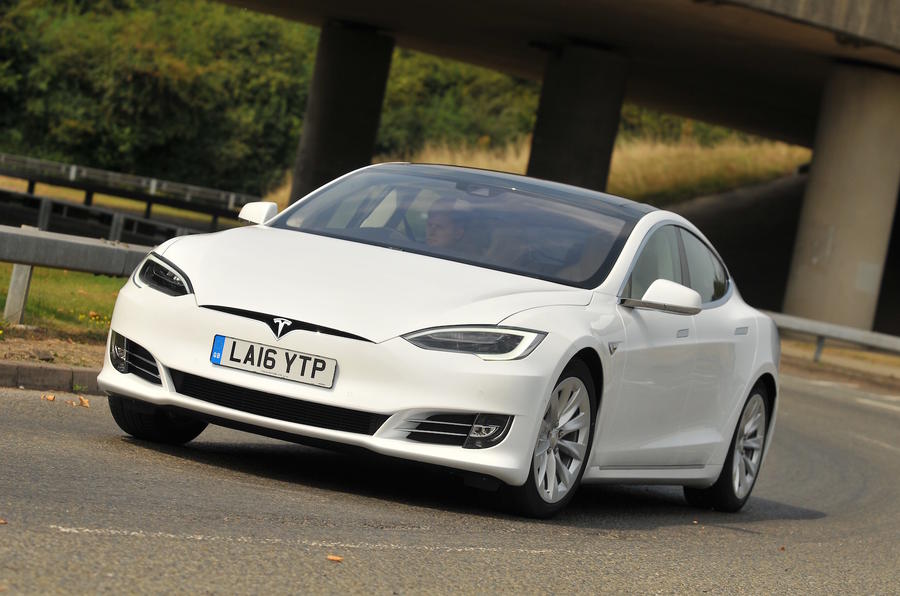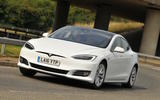What is it?
Tesla has had a busy year, what with ramping up production of its Model X crossover and unveiling the smaller Model 3 saloon. But it has still found time to revise the other prong in its plug-in trident, the Tesla Model S.
All versions get a slimmer front grille and new headlights to create a look that’s more closely aligned with that of the Model X, while inside there’s a more sophisticated air filtration system and two new interior wood trim choices. However, the biggest news is a new entry-level 60kWh powertrain.
Priced from £53,400 if you go for the rear-wheel-drive 60 model, and rising to £57,800 for the twin-motor, four-wheel-drive 60D we’re testing here, it can blast these latest Model S versions from 0-60mph in 5.5sec and 5.2sec respectively.
The new 60 models actually match the acceleration of the pricier 75 and 75D models and use the same 75kWh battery pack; it’s just been artificially capped at 60kWh, which knocks about 50 miles off the range between charges.
This approach means customers can choose to upgrade later, with it requiring nothing more than an over-the-air software patch, although it’s far from a cheap option at £7850.
What's it like?
It might not be supercar quick in the way that the range-topping P90D is, but the 60D can still out accelerate all but the fastest sport saloons, and its performance is incredibly accessible due to the instant torque of the electric motors.
The presence of four-wheel drive also helps. Floor the accelerator and the 60D takes off with minimal drama, thrusting you down the road while emitting nothing more than a muted whine.
Ride comfort is another strength, with the Model S soaking up most bumps, while also controlling pitch and roll well. Just don’t expect it to be huge fun in the corners; the steering is consistent enough, but it never offers anything that could be defined as feedback, so you feel rather disconnected from the action.
Of course, Tesla is proud of this in one way, offering the 60D with its Autopilot system. It might have come in for heavy criticism following a death in the US, but as long as you treat it as a driver aid rather than something that transforms the Model S into a fully autonomous car, it’s surprisingly effective at making monstrous motorway miles less tiring.
As with all modern Teslas, the interior of the 60D is dominated by a giant iPad-style touchscreen through which you control pretty much everything. Perceived quality has been improved over the years, even if still feels short of the standards set by the Porsche Panamera.
However, the Model S is more practical than the Porsche and other rivals, such as the Mercedes-Benz CLS. The Tesla has two boots, plenty of space for three on its rear bench seat and the option of two rear-facing, boot-mounted chairs that turn it into a seven-seater.
Should I buy one?
As with any electric car, it’s important to make sure that the new Tesla Model S 60D fits with your life. But if it does, it’s usefully cheaper than the 75 model, accelerates just as quickly and has only a moderately reduced range.
What’s more, unlike Model 3 buyers, anyone who chooses the 60 or 60D Model S will have free access to Tesla’s supercharger network.








































Join the debate
Add your comment
The screen
D for Dignitas
bowsersheepdog wrote:
You just keep your head in the sand..
Marc wrote:
I will so long as you keep yours up your arse.
Luddite
You've been saying that for a while, what would make you change you mind and what do you think will take over from the ICE. Other than that you're talking rubbish as proved by Telsa, Nissan, Renault, BMW but then you know better than them don't you.
BHP and KW/h
The Tesla is a great electric car, but 324 hp using 60kw gives a time-to-charge of 14.9min at full chat! Puts things more in perspective.
Kilowatts is the preferred unit
Nearly all car manufacturers actually quote the PS for power output, I think Autocar is one of the few titles to convert these to BHP. So the measurement is accurate, if decidedly old fashioned!